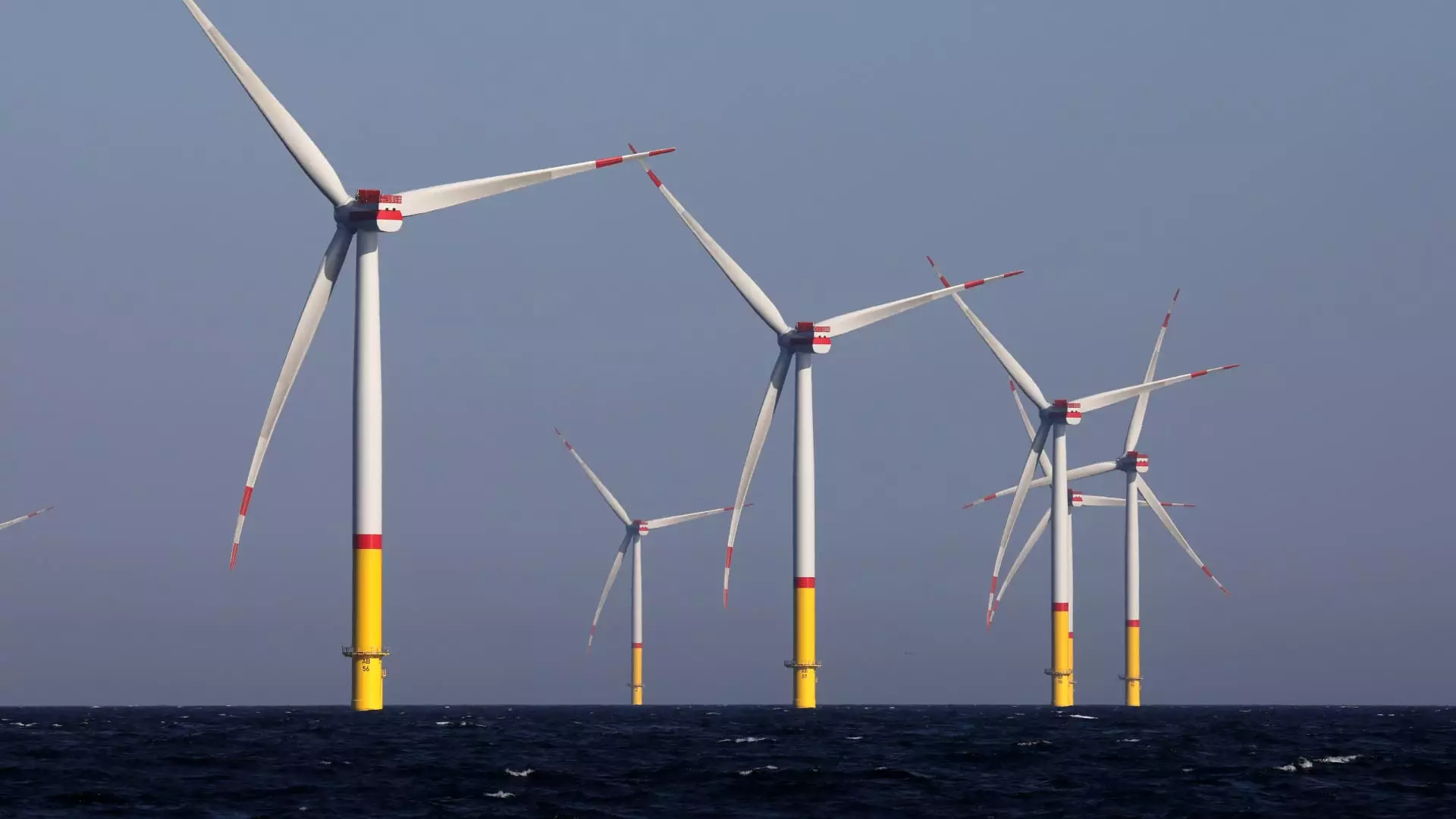The recent developments surrounding the Empire Wind 1 project in New York serve as a microcosm of the larger political battle surrounding renewable energy initiatives in the United States. As the Norwegian energy giant Equinor resumes construction on the country’s first offshore wind farm designed to provide electricity directly to New York City, we witness the clashing ideologies of a Trump-era energy policy and a Biden administration that ostensibly champions clean energy. Underlying this conflict is a struggle for energy dominance, economic benefits, and the future of sustainable initiatives—a tumultuous saga dictated by more than just facts and figures.
This project, stifled by a stop-work order issued by then-Interior Secretary Doug Burgum, has been framed by proponents and critics alike with a sense of urgency. Burgum’s assertion that the Biden administration swiftly greenlit Empire Wind—”without sufficient analysis or consultation”—echoes a familiar cry from skeptics of government efficiency in environmental matters. One could argue that such apprehensions, while rooted in legitimate concerns about environmental oversight, also reflect a resistance to the broader shift towards renewable energy—a shift intimately tied to an urgent narrative about climate change.
A Job-Creating Powerhouse or an Administrative Nightmare?
New York Governor Kathy Hochul’s enthusiastic endorsement of the Empire Wind project doesn’t merely highlight job creation—it embodies the aspirations of a region striving for energy innovation amid an evolving political landscape. Hochul emphasized the project’s potential to support 1,500 union jobs, pitting economic ambition against fears of regulatory overreach. Nevertheless, one must question the integrity of the project’s oversight—has the push for fossil fuel alternatives become so fervent that critical evaluations are sacrificed at the altar of political expediency?
Equinor’s significant investment of $2.5 billion rightfully garners attention; however, can we ignore the implications of such economic stakes in a project that could be perceived as both the harbinger of progress and a flashpoint for division? Critics point out that the influence of corporate interests in energy policy can often muddle the conversation, prioritizing profit over community impacts and environmental sustainability. It raises the question: are we embarking on an energy transition led by the ideals of sustainability, or are we simply replacing one set of possible environmental hazards with another?
The Polluted Legacy of Fossil Fuels
Adding a layer of complexity to this debate is the shadow of the fossil fuel industry, continuously looming over projects such as Empire Wind. Despite growing public support for renewable energy, the allure of natural gas remains potent as demonstrated by Burgum’s comments on increased access. While those in favor of natural gas applaud its perceived affordability and reliability, we must consider the long-term repercussions of maintaining reliance on fossil fuels. Is this merely a bridge to a more sustainable future, or is it a detour that risks entrenching us in outdated systems of energy generation?
Trump’s vocal opposition to wind energy—his persistent claims regarding the detrimental impact of turbines on wildlife, coupled with doubts over their economic viability—reveals a fear that many hold about the employment disruption that comes from reinventing the energy wheel. However, the stark reality is that renewable energy has the potential to not only protect avian populations and combat climate change but also to create sustainable jobs across various sectors. Logic dictates that a shift towards such energy sources is imperative for a progressive economy.
Hope Amidst Uncertainty
As we witness Empire Wind 1 reaching over 30% completion, let’s not overlook the heartening backdrop of other offshore projects in the U.S. The confidence exuded by Dominion Energy regarding the Coastal Virginia Offshore Wind project, or Ørsted’s commitment to Revolution and Sunrise Wind, illustrates a collective determination that seems to transcend partisan divisions. It signals a turning tide where community interests and climate health could, at last, lay claim to the narrative of energy policy.
Yet much remains uncertain. The loud voices of dissent, unable or unwilling to engage in constructive dialogue around renewable energy, threaten to stall progress as surely as bureaucratic red tape. The fabric of American energy independence is woven through federal policy shifts, public perception, and corporate investment, and if these threads become frayed, the potential of sustainable resources may once more fall victim to the treacherous waters of political winds.
In navigating this complex landscape, one must remain vigilant and critically aware of the motives driving energy policy. Amid the hopeful advancements, we should not lose sight of the principles that must guide us—namely, transparency, community engagement, and the necessity for collective action toward a sustainable future. Each decision made in the political arena directly influences our environmental legacy and shapes the world for future generations.

